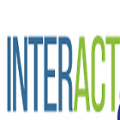Participatory budgeting (PB) has been widely adopted and has attracted significant research efforts; however, there is a lack of mechanisms for PB which elicit project interactions, such as substitution and complementarity, from voters. Also, the outcomes of PB in practice are subject to various minimum/maximum funding constraints on 'types' of projects. There is an insufficient understanding of how these funding constraints affect PB's strategic and computational complexities. We propose a novel preference elicitation scheme for PB which allows voters to express how their utilities from projects within 'groups' interact. We consider preference aggregation done under minimum and maximum funding constraints on 'types' of projects, where a project can have multiple type labels as long as this classification can be defined by a 1-laminar structure (henceforth called 1-laminar funding constraints). Overall, we extend the Knapsack voting model of Goel et al. in two ways - enriching the preference elicitation scheme to include project interactions and generalizing the preference aggregation scheme to include 1-laminar funding constraints. We show that the strategyproofness results of Goel et al. for Knapsack voting continue to hold under 1-laminar funding constraints. Although project interactions often break the strategyproofness, we study a special case of vote profiles where truthful voting is a Nash equilibrium under substitution project interactions. We then turn to the study of the computational complexity of preference aggregation. Social welfare maximization under project interactions is NP-hard. As a workaround for practical instances, we give a fixed parameter tractable (FPT) algorithm for social welfare maximization with respect to the maximum number of projects in a group.
翻译:暂无翻译


